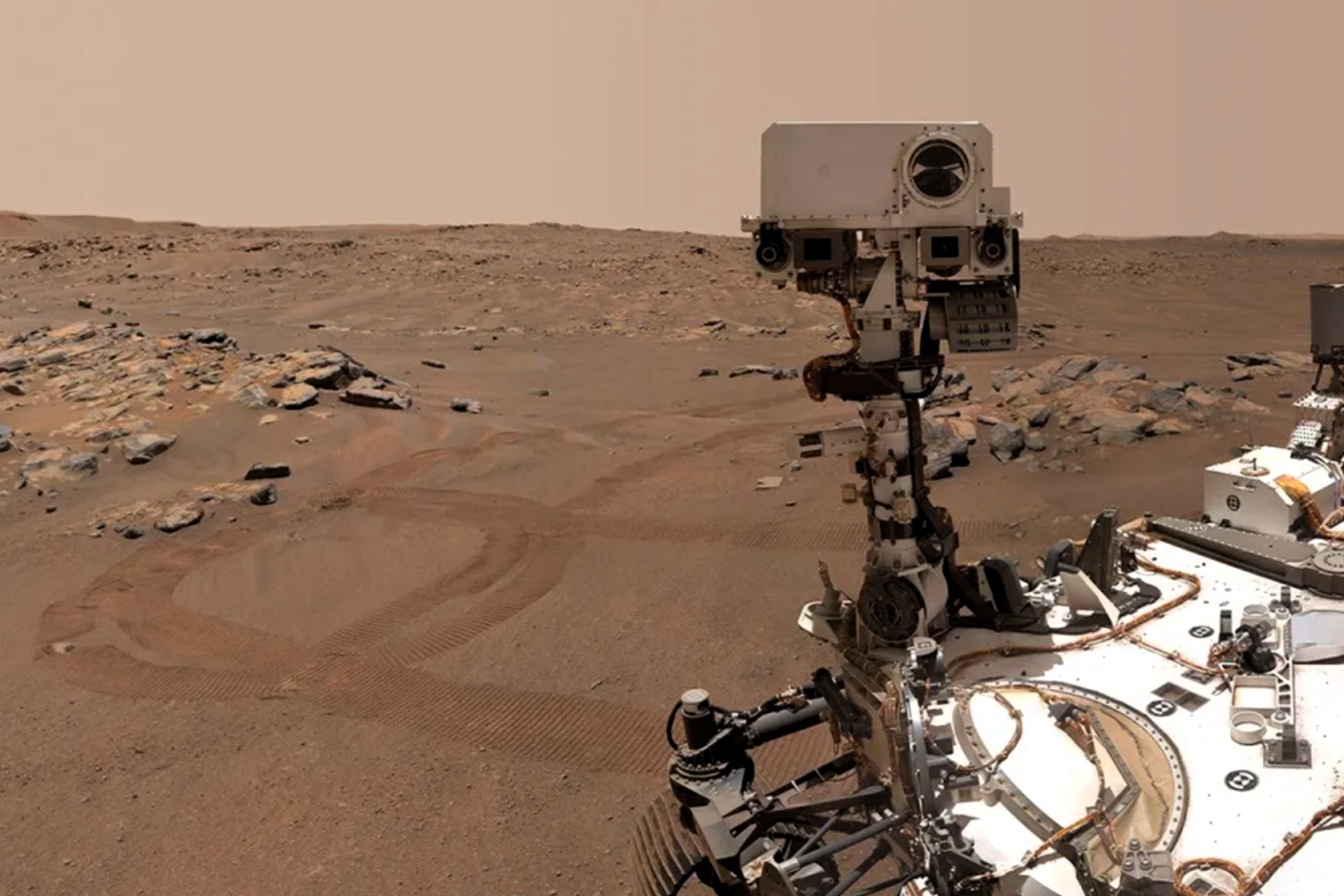
Nasa’s Perseverance rover has uncovered new evidence of chemical activity on Mars that could suggest the planet was once habitable.
Samples of mudstones from the Jezero crater – an ancient basin long thought to have held water – were found to hold carbon matter and unusual mineral assemblages that may have developed under conditions suitable for life.
“This very well could be the clearest sign of life that we’ve ever found on Mars,” said acting Nasa administrator Sean Duffy at a press conference on Wednesday.
Researchers had previously speculated that the crater within the Bright Angel formation could have contained microbial life when it served as a lake.
“When the rover entered Bright Angel and started measuring the compositions of the local rocks, the team was immediately struck by how different they were from what we had seen before,” said Dr Michael Tice, a geobiologist and astrobiologist in the Department of Geology and Geophysics at Texas A&M University.
“They showed evidence of chemical cycling that organisms on Earth can take advantage of to produce energy. And when we looked even closer, we saw things that are easy to explain with early Martian life but very difficult to explain with only geological processes.”

The researchers are hesitant to make definitive conclusions about the latest findings, which are published in a study in Nature, noting that the matter discovered could be explained by both biological and non-biological processes.
The origin of the materials could be determined through future analyses and research into living and non-living processes in order to understand the conditions in which they were formed. This would allow scientists to assess their potential as biosignatures.

Since landing at the Jezero Crater in February 2021, the car-sized Perseverance rover has collected 30 samples from the surface of Mars.
The latest sample, called ‘Sapphire Canyon’, was collected in July 2024 but budget constraints at Nasa since the Trump administration took office have put in doubt Earth-based analysis.
Nasa says that the Mars Sample Return program would “revolutionise our understanding of Mars, our solar system and prepare for human explorers to the Red Planet”.
But under President Donald Trump’s Fiscal Year 2026 budget plan, the program was criticised for being “grossly over budget”. It also called for the agency to slash its science budget by 47 per cent.
One of the casualties was the Mars Sample Return program, with funding for the space agency being funnelled into other objectives, like “returning to the Moon before China and putting a man on Mars”.
Astronomers make key discovery about planet within ‘habitable zone’
The US is losing space race to China due to Starship delays, ex-chief says
Strange blobs found inside Mars could be remnants of something ancient
Inside the Nordic base key to Europe’s hopes in space race
Scientists shocked by ‘greedy’ white dwarf star devouring its twin
Scientists are baffled by this powerful gamma ray explosion outside our galaxy







